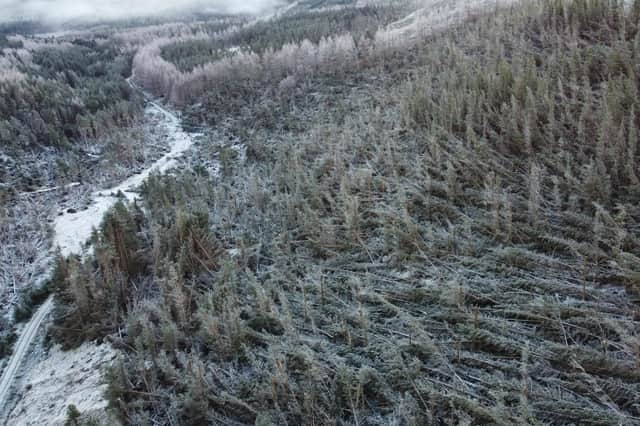Access to Glen Doll still restricted as post-Arwen clear-up continues


While Forestry and Land Scotland’s (FLS) post-storm clear-up work has seen car parks at some popular walking and leisure areas being re-opened, the organisation has stressed that other woodlands will take longer to re-open.
Members of the public are being specifically advised to check the FLS website before visiting because access to Glen Doll, Tentsmuir near Tayport and some of the woodland around Aberdeen is limited.
Advertisement
Hide AdAdvertisement
Hide AdWhile the car park at Glen Doll is now open, there is still a large number of fallen trees across all Forestry and Land Scotland waymarked trails and most mountain access routes.
The following waymarked trails remain closed: South Esk Trail, Corrie Fee Trail, Dounalt Trail and the Whitewater Trail.
Justin Livesey, FLS area visitor services manager, said: “Clearing windblow is a dangerous and difficult job and needs to be planned meticulously.
“The satellite imagery that we received from Scottish Forestry has given us a very good understanding of the main areas we need to focus on but we need to obtain more detailed aerial imagery in order to properly plan the clear up work.
Advertisement
Hide AdAdvertisement
Hide Ad“It is a long and slow process – and it needs to be because it carries significant risk. There can be huge tension and forces, both in individual trees as well as in jammed stems and root plates, that need to be assessed by trained professionals before any clearance work can begin.”
Because of the nature of the work, the public is still being asked to avoid affected forests.
Mr Livesey added: "As well as giving our teams the space to work, it will help avoid any accidents and minimise health and safety concerns.”
Felled trees, hanging trees and even trees that are still standing can all be unstable after a major storm. They can roll, pivot, slide or fall at the slightest disturbance.
Advertisement
Hide AdAdvertisement
Hide AdUnstable trees, parts of trees, root plates and stones can suddenly topple, tip over, fall or roll away without any visible reason – days, weeks or months after a storm.
Further information can be found on the FLS website.